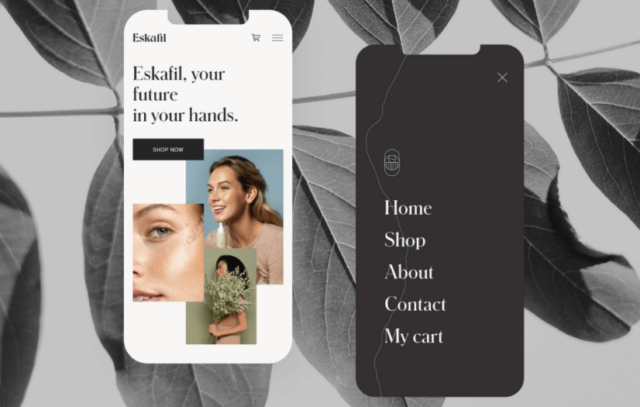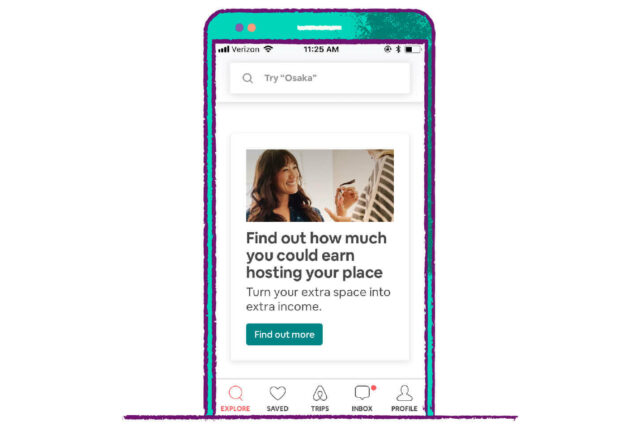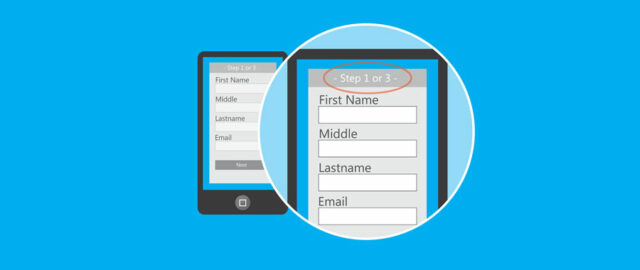According to Statista, roughly 60% of the entire internet population uses a smartphone or tablet. The forecasts suggest that mobile ownership and net surfing will grow in the future thanks to:
- Increased mobile internet speed;
- Cheaper and easier to access mobile devices.
While the average total web traffic of mobile surfing is 60%, it is even higher in Africa and Asia—continents that consider themselves to be mobile-first markets.
Indectron states that the expansion of mobile internet is also sending clear signals to advertisers who wish to attract and convert potential leads.
While the mobile platform revolution empowers discoveries of new audiences, optimized user experiences distinguish brands that successfully convert interested newcomers into engaged customers.
By mapping mobile consumer journeys, advertisers uncover friction points blocking potential leads from seamlessly becoming loyal advocates and enhance ease of purchase. Savvy advertisers translate mobile’s unprecedented access into quantified sales by creating bespoke buying touchpoints tailored to convert potential leads revealed through granular analytics.
What potential data you have from desktop device user lead generation you already have might be put to good use, but relying on it is not a good idea.
Mobile consumers have different habits, which is why advertisers need to create a dedicated campaign targeting smartphone and tablet users specifically.
Optimize the Website for Mobile Devices
The first item on the list is general website optimization. Mobile devices are not as powerful as desktop computers, so browsing a poorly-optimized website can be a frustrating experience.
Employing a remote desktop connection proves invaluable for mobile users seeking seamless access to a desktop environment and browser, effectively sidestepping mobile optimization challenges. Remote desktop app, offering comprehensive desktop functionality, empower users to execute complex workflows that may be impractical on mobile interfaces.
In addition, mobile applications designed for specific tasks can improve performance and efficiency through targeted functionality and optimized user interfaces. Such applications can be integrated with other tools and systems to ensure smooth operation in real-time interaction.
As mobile technologies evolve, the development of sophisticated and intuitive mobile apps will play a crucial role in optimizing personal and professional tasks.
As our phones become smarter, mobile applications are getting cleverer too. It’s not just about having an app for everything anymore – it’s about having apps that actually make our lives easier. Take banking apps, for instance. Remember when we had to visit a branch for every little thing?
Now, with a few taps, we’re transferring money, depositing checks, and even applying for loans right from our couches.
Enhancing mobile lead generation necessitates a secure and streamlined user interface, which is where identity and access management play a pivotal role. This crucial security measure not only protects against unauthorized access but also significantly improves user engagement by ensuring a safe and personalized experience.
Developing a killer mobile application isn’t just about cool features anymore – it’s about creating an experience that fits seamlessly into people’s daily lives. I’ve watched apps go from being simple tools to becoming essential parts of how we work and live, especially when they nail that perfect balance of functionality and user-friendly design.
What’s really exciting is seeing how the best mobile apps are now anticipating what users need before they even realize they need it, creating those “wow” moments that turn casual users into devoted fans who couldn’t imagine going back to the old way of doing things.
Adopting a sophisticated identity management framework can be a game-changer for businesses aiming to enhance their digital presence and build stronger customer relationships.
The advantages extend to leveraging larger screens, keyboards, and precise input devices, addressing the limitations of mobile devices. Security is paramount with remote desktop usage, as robust protocols encrypt communication and data, safeguarding sensitive information accessed remotely.
Moreover, the integration of a VPN service significantly bolsters security by establishing a fortified tunnel for data transmission, thus adding an essential safeguard for remote access operations. This strategy can significantly improve the user experience by providing a consistent and reliable desktop browsing experience directly on mobile devices, overcoming the usual performance and usability constraints.
It also paves the way for greater digital inclusivity, allowing users with varying degrees of technological access to benefit from full desktop capabilities. Lastly, adopting such a holistic approach to mobile and desktop integration fosters a more agile and responsive digital environment, where users can effortlessly transition between devices without sacrificing functionality or security.
Implementing proper identity and access management is essential, ensuring that only authorized users can establish remote desktop connections, fortifying the overall security framework.
In today’s digital world, having a mobile-friendly website isn’t just nice to have – it’s absolutely critical for survival. Smart businesses understand that your website needs to look killer and work flawlessly whether someone’s checking you out on a tiny smartphone or a massive tablet.
The truth is, if your site doesn’t load quickly or looks like a jumbled mess on mobile, you’re basically telling potential customers to go find someone else who cares about their experience.
A few key elements of creating a mobile-friendly website include:
- Have a responsive design: Modern content management systems like WordPress offer a plethora of mobile-ready themes that enable browsing not just for different devices but also for both landscape and portrait modes;
- Optimize content and images: Mobile devices require more time to load a page, so cluttering the website with large images, flashy features, and walls of text is hardly a sound strategy. Eliminate the unnecessary content;
- Select the right menu pattern: Users need to navigate through the site without interruptions.
Consider the hamburger menu type as a layout option, as can be seen in the visual below:
Check Mobile-Specific Channels
The internet is vast, and covering every single channel to reach out to people is hardly possible, even with unlimited resources.
It is natural for brands to focus on growing their presence on relevant marketing channels, especially if prior successful attempts have been made to back the choice.
When trying to prioritize mobile lead generation, a fair few resources should go to mobile-specific channels.
Messaging apps are an excellent suggestion. For businesses targeting a wider audience, incorporating a global SMS service can complement messaging apps by reaching customers who may not have smartphones or reliable internet access, ensuring broader communication coverage.
Messenger, WhatsApp, Telegram, and Viber have their desktop counterparts, but when we think of these apps, mobile is the first thing we associate these apps with.
Consider WhatsApp Business, for instance, which businesses can optimize using a dedicated WhatsApp CRM. This integration enables a more structured approach to managing customer interactions and pursuing leads, leveraging both free and paid tools effectively.
The digital landscape offers myriad opportunities for connection, yet fully harnessing every channel is an ambitious task, even for the most resource-abundant organizations. Brands smartly concentrate their efforts on channels proven to yield returns, particularly those fostering mobile engagement.
Messaging applications stand out in this regard; platforms like Messenger, WhatsApp, Telegram, and Viber, though available on desktop, are predominantly used on mobile devices. Specifically, WhatsApp Business emerges as a potent tool for firms aiming to refine their outreach.
By integrating with specialized WhatsApp CRM systems, companies can manage customer interactions with greater precision, harnessing the capabilities of both free and premium features to enhance lead generation and customer service efforts.
You need to integrate WhatsApp to Facebook and Instagram, two social media behemoths with billions of users.
Once the integration is done, you can start an ad campaign. The Business app enables advertisers to promote an image catalog directly from WhatsApp or a photo gallery you have stored on Instagram or Facebook.
If you are up to do some A/B testing to see which images perform the best but have too many stored on the device, upload pictures from Apple iPhone to iCloud, for example, and keep them there until you need an image for promotional purposes.
The ad on WhatsApp redirects the leads to your WhatsApp inbox and lets them start a conversation with you.
WhatsApp also offers a QR code generator. You can generate one with a link that redirects to your landing page and post the code on various channels to make the landing page accessible for those on a mobile.
To enhance your strategy for capturing leads, consider employing a robust QR code generator. This tool allows you to create unique digital gateways that connect directly to your marketing campaigns or essential contact information.
In the realm of digital marketing, the concept of hybrid casual has gained prominence. It refers to a versatile approach that combines elements of both casual and formal communication. Marketers are increasingly recognizing the value of this hybrid strategy, which allows them to engage with audiences in a more authentic and relatable manner while still maintaining a professional tone.
For those seeking to enhance their lead generation efforts, understanding the nuances of hybrid casual communication is crucial. By blending the informality of casual interactions with the precision of formal messaging, businesses can create a seamless user experience that resonates with their target audience.
This utility enables the crafting of distinctive digital conduits that seamlessly link to your targeted marketing initiatives or pivotal contact data. Adopting this method can streamline the consumer’s experience, guaranteeing a more streamlined process of lead capture and a boost in interactive responses.
Improve CTAs
A call-to-action button often determines how successful the campaign will be. The lack of encouragement due to unappealing content is the opposite of what advertisers should be aiming for.
Look at this example from Airbnb:
The blank white space goes well with the image at the top and the headline in the middle. There is a follow-up CTA between the headline and the button at the bottom.
A minimalistic approach that is easy to read is not a burden for potential leads, so they are not frustrated or confused looking at the ad.
Colors play a prominent role, but so does the copy. Besides the FIND OUT MORE example above, one can try:
- CHECK NOW;
- CLICK FOR MORE INFO;
- TAKE ME TO THE OFFER;
- LAST CHANCE TO ENTER;
- HURRY BEFORE IT’S TOO LATE.
A powerful word combined with an encouragement to take action and a spark of FOMO (fear of missing out) create a persuasive call to action.
Recognizing the surge in customer base necessitates immediate attention to your website’s technical aspects is crucial. Several organizations attest to the significant assistance received from an empower review company in this regard. Their software application has markedly streamlined and clarified all financial transactions and records, making business operations more efficient.
Encourage Phone Calls
Some marketers avoid call-to-action buttons and instead focus on emphasizing another way to engage with the brand—by making a direct phone call.
Naturally, not everyone is going to respond to such a method positively. It requires A/B testing to determine whether the approach works for you specifically.
Let’s say that a food delivery company is advertising itself for mobile users in a nearby area with the help of geo-targeting. It makes sense to include a phone number for a quick delivery service. A similar thing applies to beauty salons, where you book an appointment via a mobile call most of the time.
With advancements in automation, businesses use AI phone call solutions to manage inquiries, schedule appointments, and streamline support, improving user experience and reducing wait times.
On the other hand, can you expect a difference from including a phone number if you are promoting various goods in a dropshipping store? Unlikely, but you can never know without trying first.
Having said all that, a phone number as a means to contact is not bad to display regardless. If someone has any questions and wants clarifications, calling directly is effective because you get a response almost immediately, unlike sending an email, for example.
Design Friendly Forms
Having less room to work with on mobile advertisement is one of the standout problems for mobile lead generation.
If you want to capture leads with pop-ups and various forms, you will need to find a form formula that works well on small screens.
Imagine how tedious it is for users to fill out a survey on a mobile by clicking through page after page or scrolling endlessly.
The goal is to optimize the forms for a friendly experience. For starters, get rid of unnecessary information. Ask only what is essential.
The shorter the form and landing page, the more likely they are to be completed. Not to mention that it takes less time for everything to load if the mobile device has to process less information.
At times when there is no option but to use a multi-step form, make sure to break it into parts and present a few fields at a time. Lastly, show how much is left to complete the form, similar to how it is shown in the image below:
Track and Optimize Your Strategies
The last bit of advice is to not forget about how important it is to track and optimize your strategies.
Metrics like conversion rate, bounce rate, mobile website traffic, cost per lead, etc., paint a picture of how the campaign is progressing.
Determining what works and what does not is impossible without data-driven analytics. Making blind decisions will not get you anywhere. You might succeed one or two times, but that is hardly the right mindset for long-term endeavors.
Finally, remember that there are all kinds of different smartphones and tablets in the market. If you have the necessary resources, do your best to test how your advertisement is optimized on different devices so you can cover as much ground as possible.
Conclusion
To sum it all up, mobile lead generation is a difficult way to attract new customers. However, in the age of mobile surfing, it would be a waste not to take action.
It takes a while to optimize everything with the help of A/B testing and other means. Moreover, with new trends in digital marketing and the mobile device world emerging on a regular basis, it is crucial to react in time and adjust.
Ultimately, though, mobile devices will continue to become more prominent in our lives, and advertisers cannot avoid it. The sooner you start and the more effort you put into doing mobile lead generation correctly, the more benefits there will be for you.



